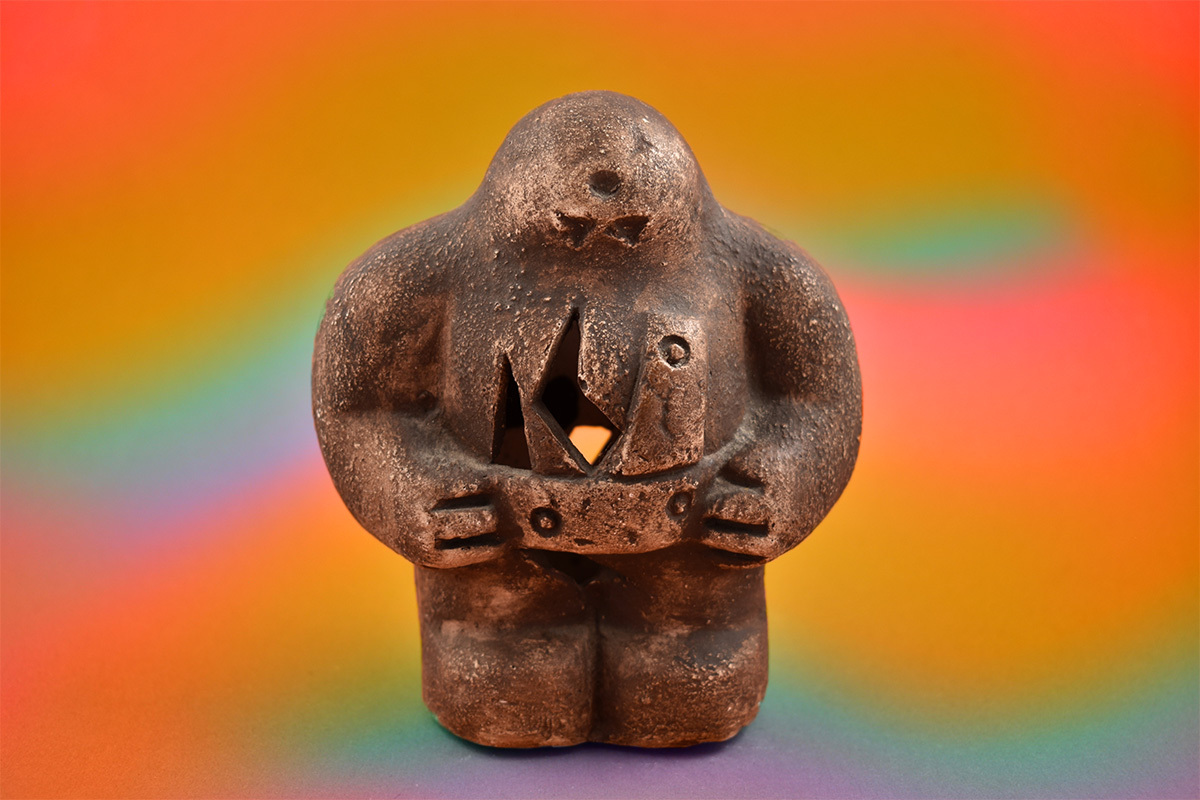As I was reading the memoir “Golem Girl” by Riva Lehrer, I couldn’t help thinking back to a connection I had made in my mind earlier between the golem as fantastic creature and golem as queer symbol.
One might ask what does a mythological creature made of clay have to do with queerness. For starters, with both golems and queerness, there is a sense of being the “other,” and a sense of being perceived as the “monstrous.” Yet even more than that, there is a sense of multiplicity of identity. Golems, like queerness, exist in contradictions and complexity. They appear to be one thing, yet turns out to be many.
But let’s back up. What even is a golem?
Within Western science fiction, golems have been seen as artificial beings animated by those playing Frankenstein — they’re automatons made by whatever materials are available, be it stone, metal, etc., and are creatures of immense physical strength and dangerous potential. Yet the original golems go further back in time, all the way to Jewish folkore, when the lines between fantasy and reality were very thin.
One of the earlier and more well-known examples of the golem is found within the 16th century narrative known as “The Golem of Prague.” In this story, when his people were under attack from antisemitic pogroms that threatened to wipe them out of existence, rabbinical scholar Judah Loew ben Bezalel, also known as the Maharal, reportedly created a large figure out of clay from the banks of the Vltava River, summoning the creature to life through specific rituals and Hebrew incantations including carving the Hebrew word emet, meaning “truth,” into its forehead. With success, the golem defended the people of the Jewish ghetto, though not without drawbacks, for with the creature’s unlimited strength the Maharal feared the creature’s potential for destruction once he could no longer control it. So in order to deactivate his creation, the Maharal struck out the first letter (א) in emet, thus transforming the inscription from emet to met, meaning “dead.”
As a Jewish reader and fan of the spectacular, I was drawn to this story because of the weight of its dimensions, seeing in it the same heroic legacy as I do in Jewish American Jack Kirby’s creation of The Thing from the Fantastic Four. Yet upon closer analysis, I also began to see parallels that mirror my life as a queer person, being created by another person’s hands, imprinted with the expectations that others drew upon my body, feared that I will become an independent entity beyond anyone’s control.
To test out my theory, I reached out to other Jewish queer artists who have explored the elements of the fantastic and Jewish identity in their own work.
Shira Glassman, author of the “Mangoverse” series, a queer Jewish feminist fantasy series complete with “wizards, magic spells, and shapeshifting witches,” had this to reply when I asked for her take on the golem as queer icon: “I think it’s natural that any group of people who feel stressed out and unsafe might have a favorite protective supernatural symbol. The fantasy that something that isn’t bound by normal laws of science has our back is comforting. And as queer Jews we get to be stressed twice over.”
Glassman went on to add, “Personally, I never felt the golem was more connected to queerness than cis/hetero/allo-straightness, but obviously as a people we are proud of our diverse opinions so if other queer Jewish people feel that way I understand. Plus, it makes sense because the world isn’t safe for queerness.”
Aden Polydoros, author of the upcoming Jewish historical YA novel “The City Beautiful,” has long been interested in the golem as queer metaphor, saying, “The golem has always fascinated me, both for the mythology surrounding it, as well as the metaphors that can be tied to it. In some variants of the Prague legend, it is love that allows the golem to break free of its creator’s control, love that humanizes it. In that particular legend, its desire for human connection is what eventually destroys it. However, the fact that only when the golem finds love is it able to become something more than the role it’s been molded into — bucking against its master’s (and society’s) expectations — that for me is a metaphor for queerness.”
The queer community, like the Jewish community, has always relied on stories, whether written, spoken or signed, to draw knowledge and comfort from. Queer Jews have taken the story of Purim and Queen Esther as a queer/coming out narrative, of finding salvation through revealing one’s truth. Like the golem, when our authentic selves are hidden, we are erased through met, death, but through emet, truth, we are able to reclaim and reanimate ourselves, and are able to exist through the act of self-creation.
Which brings me back to Riva Lehrer, a queer Jewish disabled artist and writer who draws upon the golem as allegory for the way her body has been perceived by society. Taking the Hebrew translation of golem as “shapeless mass,” she writes, “The day I was born I was a mass, a body with irregular border. The shape of my body was pared away according to normal outlines, but this normalcy didn’t last very long. My body insisted on aberrance. I was denied the autonomy that is the birthright or normality.” With a definitive clarity of tone, the author declares, “I am a Golem. My body was built by human hands. And yet — If I once was monere [monster], I’m turning myself into monstrare: one who unveils.”
In the story of the golem, I see myself. I see a being who is feared and called monstrous for the mere act of existing. And I see a being who is animated by faith, by magic, by truth, by some nameless combination of the above and other inexplicable and fantastic forces.



